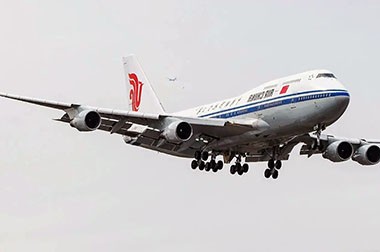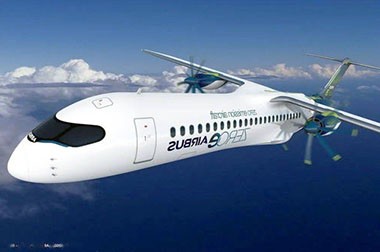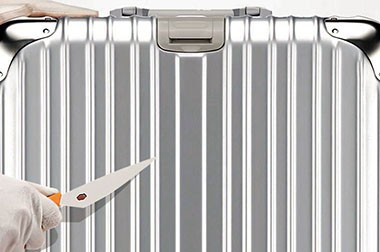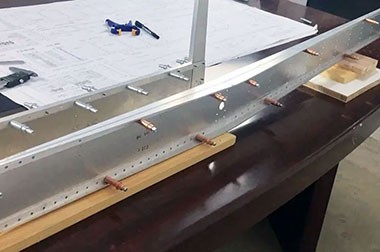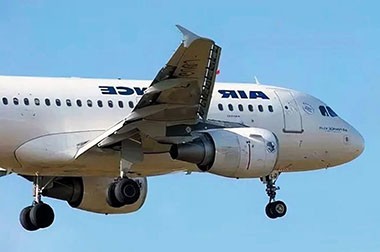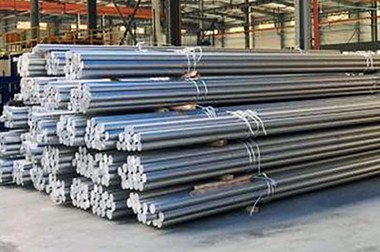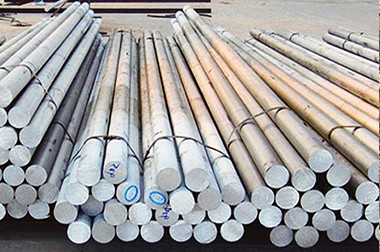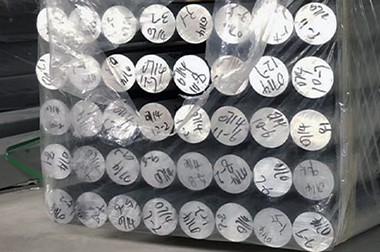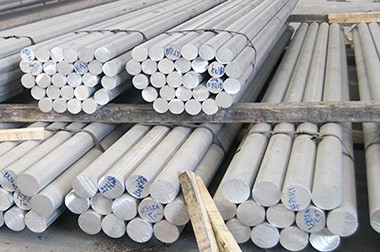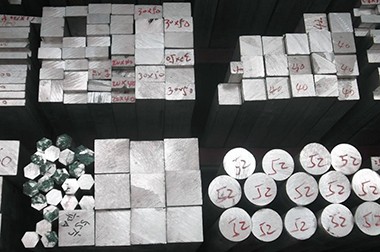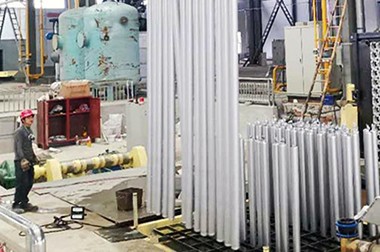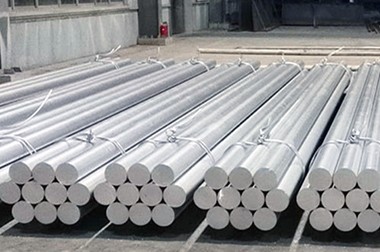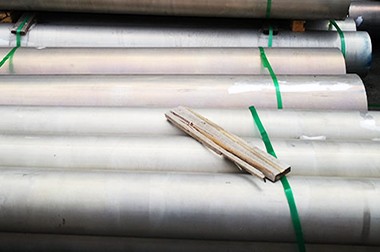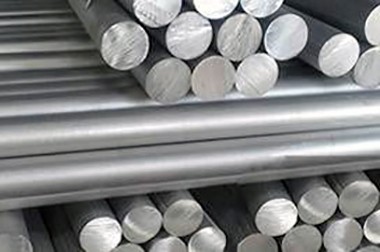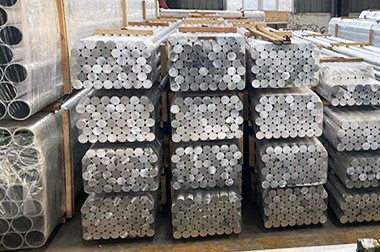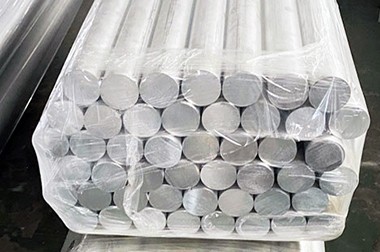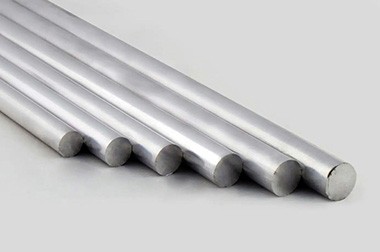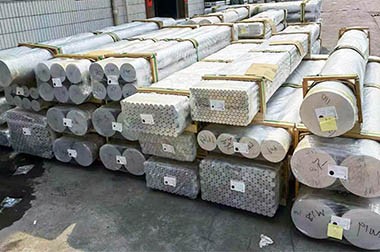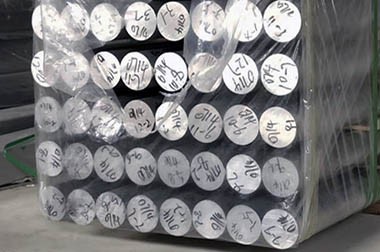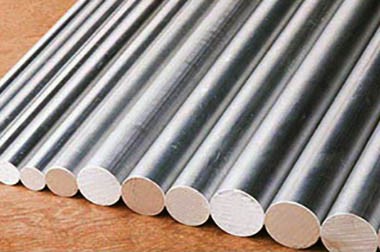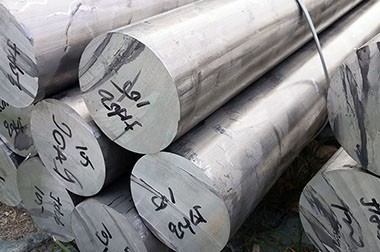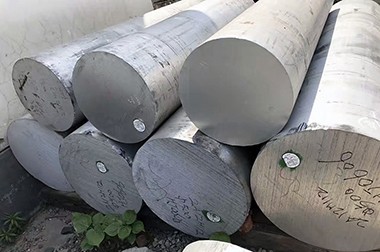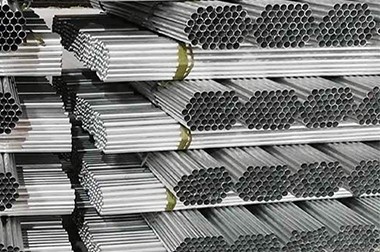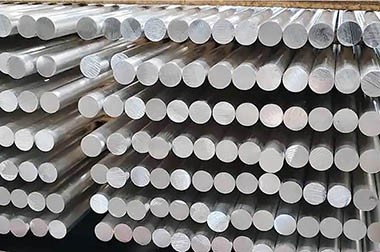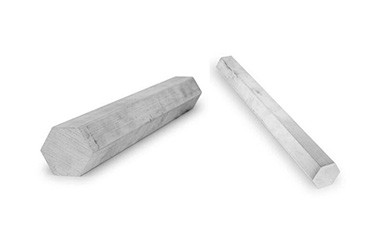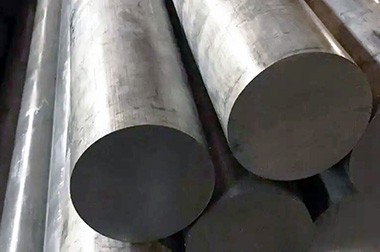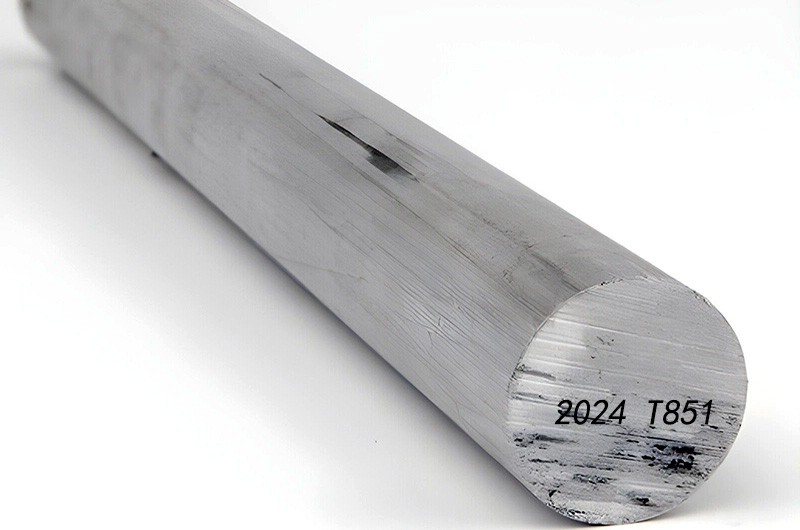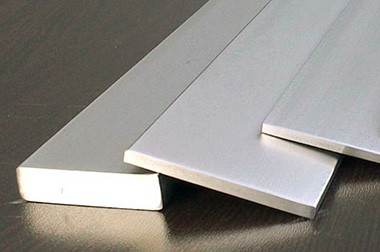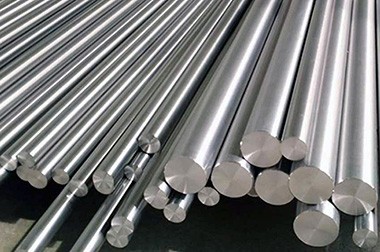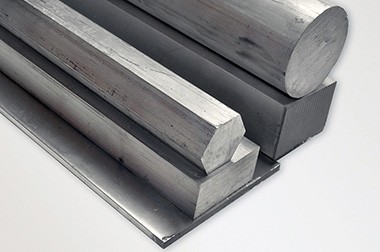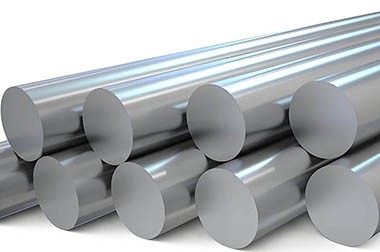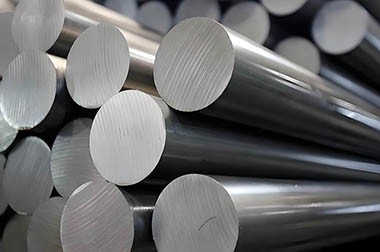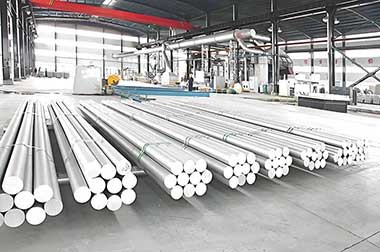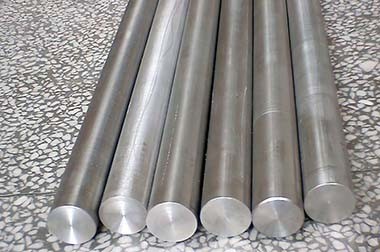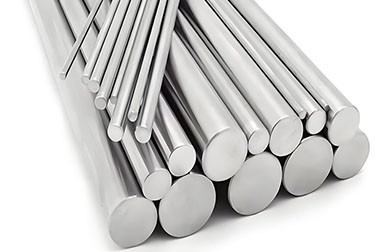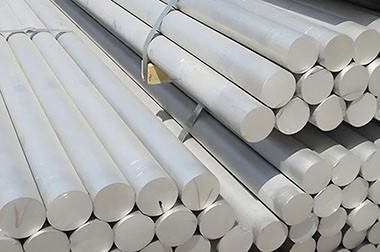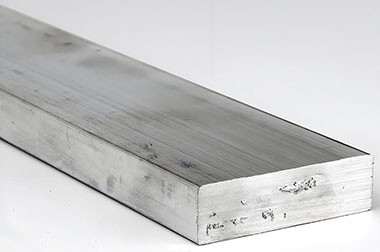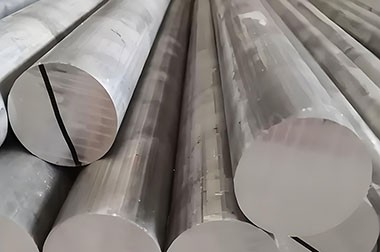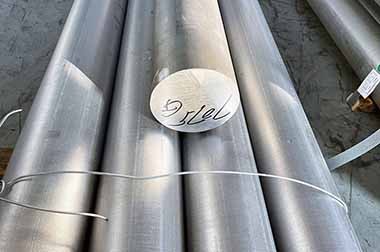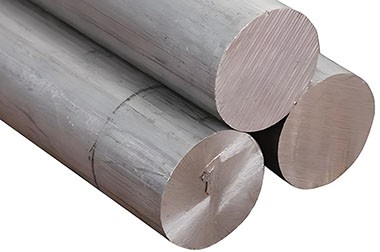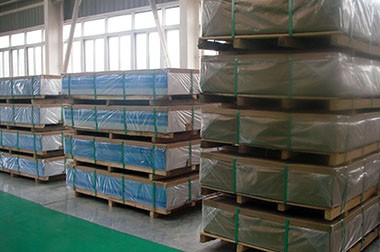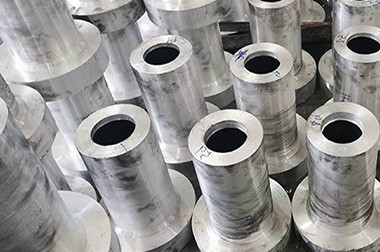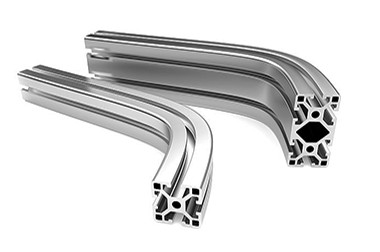7050 Aluminum Round Bar
7050 aluminum round bar is a high-strength alloy known for its excellent toughness and stress corrosion resistance. It is primarily used in aerospace and military applications, performing excellently in environments that require durability under pressure. Its composition and heat treatment make it an ideal choice for thick sections, where maintaining performance is crucial.
7050 aluminum is an aerospace-grade alloy known for its high strength, excellent fracture toughness, and outstanding stress corrosion cracking resistance. Unlike some other high-strength alloys, it is less sensitive to quenching, which means it can maintain its strength even in thicker sections—an essential advantage for aircraft structural applications.
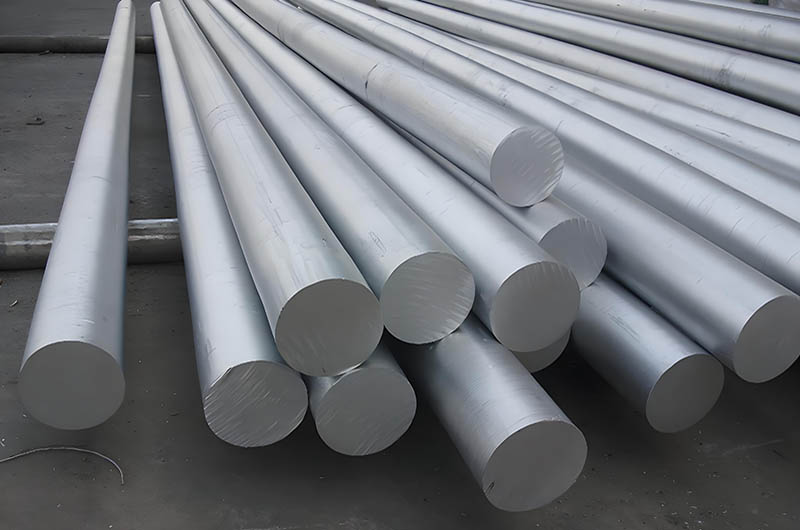
7050 Aluminum Round Bar Standards and Certifications
- AMS: 4050, 4076, 4077 (Aerospace material specifications).
- ASTM: B221 (Standard specifications for aluminum bars).
- MIL-SPEC: MIL-A-22771.
7050 Aluminum Round Bar Available Sizes
7050 Aluminum Round Bar Specifications
- Diameter range: 0.5 inches to 12 inches (custom sizes available).
- Length: Standard 12 feet or custom cut to size.
- Tolerance: ASTM B221 (±0.005 inches - 0.031 inches, depending on diameter).
- Surface finish: Polished, smooth, or anodized.
- Sizes: Round bars come in various diameters (e.g., 1.5 inches, 4 inches, etc.) and lengths.
Haomei Aluminum offers customized size options to meet specific engineering requirements, from small diameter precision bars to larger, thicker bars for aerospace structural components.
Common Specifications for 7050 Aluminum Round Bar
| Diameter (inches) | Common Length (feet) | Remarks |
| 0.5" (12.7 mm) | 12' (Standard), 6' (Short Cut) | Small size, suitable for precision parts or light structures. |
| 1" (25.4 mm) | 12' (Standard), Custom Length | General size, commonly used in machining and tool manufacturing. |
| 2" (50.8 mm) | 12' (Standard), Custom Length | Medium-sized structural components, such as shafts or support parts. |
| 3" (76.2 mm) | 12' (Standard) | High-load applications, such as aerospace frames. |
| 4" (101.6 mm) | 12' (Standard), Custom Length | Heavy-duty industrial parts or large machine components. |
| 6" (152.4 mm) | 12' (Standard), Custom Length | Special applications (e.g., military or large molds). |
| 8" (203.2 mm) | Custom Length (Special Order Required) | Extremely thick sections, for extreme high-stress environments. |
| 10" (254 mm) | Custom Length (Special Order Required) | Special needs, such as large hydraulic systems or custom equipment. |
| 12" (304.8 mm) | Custom Length (Special Order Required) | Super-large projects, requires pre-production consultation. |
7050 Aluminum Round Bar Heat Treatment
Common conditions: T7451 (solution heat treatment, tensile stress relief, and over-aging).
Advantages: Enhanced stress corrosion resistance and dimensional stability.
7050 Aluminum Round Bar achieves the optimal balance between strength, toughness, and corrosion resistance, making it the preferred choice for critical aerospace and defense applications. Its versatility in processing and the availability of standard aging ensure reliability in high-performance scenarios. Proper manufacturing techniques and protective measures can enhance its lifespan in harsh environments.
7050 Aluminum Round Bar Corrosion Resistance
Superior to 7075 in stress corrosion cracking resistance; corrosion resistance is lower than 6061. Protection: Anodizing or coating is recommended for use in harsh environments.
7050 Aluminum Round Bar Applications
7050 Aluminum Round Bar is widely used in high-performance fields, including:
- Aerospace: Aircraft fuselage frames, bulkheads, wing skins, and other structural components where high strength-to-weight ratio and corrosion resistance are critical.
- Military: Missile components, armored vehicles.
- Industrial: Shafts, hydraulic components, high-stress fasteners.
- Automotive: Suspension systems, racing components.
- Sporting goods: Bicycle frames, climbing gear.
- Other industries: High-stress industrial components, precision machinery, and applications requiring excellent machinability and high toughness.
7050 Aluminum Round Bar Manufacturing Methods
Extrusion and drawing: 7050 Aluminum Round Bar is typically made by extrusion or cold drawing, ensuring consistent mechanical properties across the cross-section of the bar.
| Manufacturing Method | Description |
| 7050 Aluminum Round Bar Extrusion | 7050 Aluminum Round Bar is manufactured through an extrusion process, where aluminum alloy billets are pushed into molds at high temperatures to form a round cross-section. This process ensures the bar has excellent mechanical properties and a dense microstructure while maintaining good ductility and corrosion resistance. The extruded 7050 Aluminum Round Bar is widely used in structural and load-bearing components in the aerospace industry due to its outstanding performance in strength and corrosion resistance. |
| 7050 Aluminum Round Bar Drawing | 7050 Aluminum Round Bar is further processed by cold drawing, where the extruded aluminum bar is drawn through a die at room temperature to significantly improve its dimensional accuracy and surface finish. The cold drawing process also enhances the material’s strength and hardness, while improving the bar’s straightness and surface quality. Due to these properties, the drawn 7050 Aluminum Round Bar is particularly suitable for high-precision and high-strength aerospace structural components, including aircraft fuselages, wing spars, and landing gear. |
7050 Aluminum Round Bar popular size
Popular sizes for 7050-T7451 aluminum bars ams 4050
| Description | Diameter (inches) | Temper | Processing method |
| 7050-T7451 Round Bar | 0.5" | T7451 | Extrusion and drawing |
| 7050-T7451 Round Bar | 1" | T7451 | Extrusion and drawing |
| 7050-T7451 Round Bar | 2" | T7451 | Extrusion and drawing |
| 7050-T7451 Round Bar | 3" | T7451 | Extrusion and drawing |
| 7050-T7451 Round Bar | 4" | T7451 | Extrusion and drawing |
| 7050-T7451 Round Bar | 6" | T7451 | Extrusion and drawing |
| 7050-T7451 Round Bar | 8" | T7451 | Extrusion and drawing |
| 7050-T7451 Round Bar | 9" | T7451 | Extrusion and drawing |
| 7050-T7451 Round Bar | 10" | T7451 | Extrusion and drawing |
| 7050-T7451 Round Bar | 11" | T7451 | Extrusion and drawing |
| 7050-T7451 Round Bar | 12" | T7451 | Extrusion and drawing |
Popular sizes for 7050-T7651 aluminum bars
| Description | Diameter (inches) | Temper | Processing method |
| 7050-T7651 Round Bar | 0.5" | T7651 | Extrusion and drawing |
| 7050-T7651 Round Bar | 0.75" | T7651 | Extrusion and drawing |
| 7050-T7651 Round Bar | 1" | T7651 | Extrusion and drawing |
| 7050-T7651 Round Bar | 1.5" | T7651 | Extrusion and drawing |
| 7050-T7651 Round Bar | 2" | T7651 | Extrusion and drawing |
| 7050-T7651 Round Bar | 2.5" | T7651 | Extrusion and drawing |
| 7050-T7651 Round Bar | 3" | T7651 | Extrusion and drawing |
| 7050-T7651 Round Bar | 4" | T7651 | Extrusion and drawing |
| 7050-T7651 Round Bar | 5" | T7651 | Extrusion and drawing |
| 7050-T7651 Round Bar | 6" | T7651 | Extrusion and drawing |
| 7050-T7651 Round Bar | 8" | T7651 | Extrusion and drawing |
Popular sizes for 7050-T7351 aluminum bars
| Description | Diameter (inches) | Temper | Processing method |
| 7050-T7351 Round Bar | 0.5" | T7351 | Extrusion and drawing |
| 7050-T7351 Round Bar | 0.75" | T7351 | Extrusion and drawing |
| 7050-T7351 Round Bar | 1.0" | T7351 | Extrusion and drawing |
| 7050-T7351 Round Bar | 1.25" | T7351 | Extrusion and drawing |
| 7050-T7351 Round Bar | 1.5" | T7351 | Extrusion and drawing |
| 7050-T7351 Round Bar | 2.0" | T7351 | Extrusion and drawing |
| 7050-T7351 Round Bar | 2.5" | T7351 | Extrusion and drawing |
| 7050-T7351 Round Bar | 3.0" | T7351 | Extrusion and drawing |
| 7050-T7351 Round Bar | 3.5" | T7351 | Extrusion and drawing |
| 7050-T7351 Round Bar | 4.0" | T7351 | Extrusion and drawing |
| 7050-T7351 Round Bar | 5.0" | T7351 | Extrusion and drawing |
| 7050-T7351 Round Bar | 6.0" | T7351 | Extrusion and drawing |
7050 Aluminum Round Bar Machining and Manufacturing
- Machinability: Good machinability when using appropriate tools (hard carbide tools recommended); coolant should be used to prevent wear.
- Welding: Challenging; requires TIG/GTAW technology and pre/post-weld heat treatment.
- Forming: Best performed in the annealed state; can be forged.
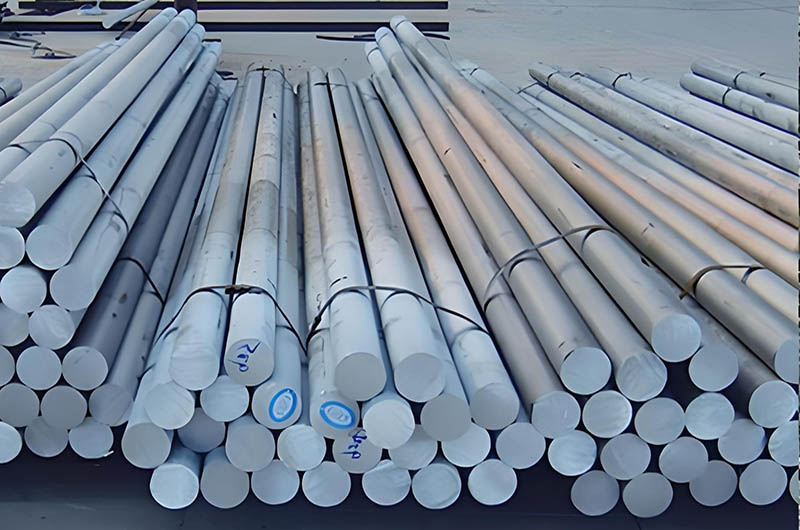
Selection and Use of 7050 Aluminum Round Bar
| Selection and Use | Description |
| How to Choose the Right Specification of 7050 Aluminum Round Bar | When selecting the specification of 7050 aluminum round bar, the appropriate size and strength must first be determined based on the application requirements. 7050 aluminum round bar is commonly used in aerospace applications, so its selection should take into account factors such as strength, corrosion resistance, and weldability. The diameter and length should be chosen according to the design requirements of structural components, ensuring it can withstand the design load and meet processing requirements. Additionally, attention should be paid to the heat treatment state of the round bar (such as T7451, T76, etc.) to meet specific mechanical performance requirements. |
| What Treatment is Needed Before Using 7050 Aluminum Round Bar | Before using 7050 aluminum round bar, it is typically necessary to clean and remove oxidation to ensure surface smoothness and weld quality. For applications requiring high precision, further treatments such as heat treatment (e.g., solution treatment and aging) may be needed to enhance the material's mechanical properties. Additionally, depending on the application, surface treatments (such as anodizing) may be required to improve corrosion resistance and wear resistance. |
| Precautions When Using 7050 Aluminum Round Bar | When using 7050 aluminum round bar, care should be taken to avoid excessive heat treatment in high-temperature environments, as excessive heat may lead to a decrease in material performance. During processing, proper cutting speeds and cooling methods should be followed to avoid damage or excessive wear on the aluminum round bar. Although 7050 aluminum round bar has good corrosion resistance, special care should still be taken to avoid contact with strong acids or bases in some extreme environments to prevent corrosion. |
Comparison of 7050 Aluminum Round Bar with Other Aluminum Alloys
| Comparison | Description |
| Comparison with 7075 Aluminum Alloy | Compared to 7075 aluminum alloy, 7050 aluminum round bar has higher corrosion resistance and better stress corrosion cracking resistance, making it especially suitable for high-humidity or marine environments. While the strength of 7050 aluminum is slightly lower than 7075, it strikes a better balance between high strength and toughness, making it ideal for aerospace applications that require high-load-bearing components. 7075, on the other hand, is more suitable for structural components that require extreme strength, such as the main framework and load-bearing parts of aircraft. |
| Is 2014 Aluminum Alloy Better than 7050? | 2014 aluminum alloy and 7050 aluminum alloy have different performance characteristics. 2014 aluminum alloy has higher strength, but its corrosion resistance is inferior to that of 7050. 7050 aluminum alloy, due to its excellent corrosion resistance and outstanding stress corrosion cracking resistance, is typically better suited for aerospace and high-demand environments. On the other hand, 2014 aluminum alloy, with its higher strength, is suitable for applications requiring heavy load-bearing capabilities and less stringent corrosion resistance, such as non-structural components or mechanical parts of aircraft. |
| Differences in Application Scenarios of Different Aluminum Alloys | 7050 aluminum round bar is suitable for aerospace, military, transportation, and high-performance structural components, especially in applications that require a balance between strength and corrosion resistance, such as aircraft structural parts, wings, fuselage frames, and landing gear. 7075 aluminum alloy is more commonly used in applications requiring extreme strength, such as high-load parts of aircraft and military equipment. 2014 aluminum alloy is more widely used in mechanical parts, the automotive industry, and non-load-bearing structural components, as it offers higher strength but lower corrosion resistance. |
7050 aluminum round bar is favored by the aerospace industry due to its high strength and toughness combined with stress corrosion cracking resistance. Its carefully controlled composition and heat treatment conditions ensure reliable performance in demanding structural applications. Whether extruded or cold-drawn, it is available in various sizes and surface treatments to meet different engineering specifications.
You may also be interested in the following
-
7050 T7451 Aluminum for Aircraft Fuselage Reinforcement Frame
7050 T7451 high-strength aluminum alloy is particularly suitable for aircraft fuselage reinforcement frames, longitudinal beams, bulkheads and other structural parts.
-
7050 Aircraft Aluminum for Trailing Edge Ribs
7050 aluminum alloy is selected for the trailing edge ribs due to its strength-to-weight ratio, which helps maintain the optimal aerodynamic performance of the wing.
-
7050 Aircraft Aluminum for Cargo Floor Beams
7050 heavy-duty aluminum is designed for cargo hold floor beams, providing the strength necessary to support heavy loads while maintaining lightweight characteristics.
-
7050 Aircraft Aluminum for Bulkheads
7050 aerospace aluminum is used for bulkhead structures, providing strong structural support and compartments within the aircraft.
-
7050 Aerospace Aluminum for Baggage Bin Structure
7050 is a lightweight yet strong aluminum material used for suitcase structures, providing strength without adding unnecessary weight.
-
7050 7475 Aerospace Aluminum for Wing Attach Structure
Alloys 7050 and 7475 are used in the construction of wing attach structures, ensuring safety and durability during flight.
-
7050 7475 7099 Aircraft Aluminum for Wing Ribs
7050, 7475, and 7099 high-strength aluminum alloys are used to manufacture wing ribs, providing structural support to the wings and enhancing structural integrity.
-
7050 7475 7099 Aerospace Aluminum for Wing Spars
7050, 7475, and 7099 have outstanding strength-to-weight ratios and fatigue resistance, making these high-strength aluminum alloys ideal materials for manufacturing wing spars.
-
2024 7050 7075 Aerospace Aluminum for Horizontal Tail Fittings
Alloys 2024, 7050, and 7075 provide the necessary strength and stiffness for horizontal tail components of aircraft, ensuring reliable control surface performance.
-
7050 Aircraft Aluminum for Leading Edge Ribs
Aluminum 7050 is specifically used for manufacturing leading edge ribs due to its strength and resistance to stress concentration, ensuring aerodynamic performance and structural support.

